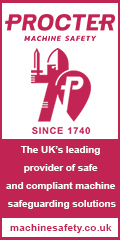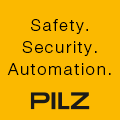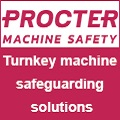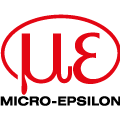
Posted to News on 16th Nov 2023, 12:00
How do you develop the perfect HMI PCAP touch panel?
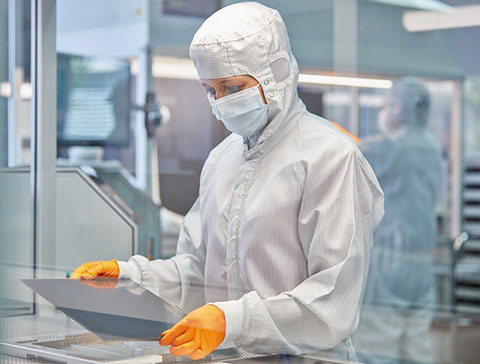
The right selection of components for HMI PCAP touch panels allows for an input system that is optimally matched to the application, as the experts at Schurter explain.
HMI input systems for machines, plants, and devices are complex and sophisticated, but constantly evolving. PCAP touch panel design involves various components for assembly and integration, including front glass, PCAP sensor, display, optical bonding technology, and mechanical integration.
A qualified technology portfolio is crucial for integrating components like touchscreens, displays, and controllers, while coordinating individual process steps for complete solutions.
Selection of the front glass
There are already various options when selecting the coverlens and its surface finish. If the front is made of glass, there is a whole range of possibilities: clear, antiglare, chemically or thermally hardened, with gloss values in various gradations, as well as with additional coatings such as AR (anti-reflective), AS (anti-soiling), AF (anti-fingerprint) or anti-bacterial. The choice of surface finish for chemical anti-reflection coating (gloss value) of the front glass is made in combination with the display. With high-resolution displays in particular, there is a risk of the sparkling effect if the chemical structure of the glass surface is not matched.
Thermally or chemically tempered glass is many times harder than float glass and particularly stable against blunt force impact. However, thermally tempered glass is only available from a certain glass thickness. Laminated glass guarantees increased resistance to breakage, as in the event of breakage the glass splinters adhere to the adhesive film.
For all coatings, the specification of the scratch resistance of the surface and the resistance to chemically aggressive substances such as disinfectants play a significant role. A high IK value (impact resistance) can be achieved by laminated glass or tempered thick glass and suitable integration.
In food production and portable equipment, a plastic cover lens, PC (polycarbonate) or PMMA (polymethyl methacrylate), is often used. To meet absolute break resistance, POLYM, an unbreakable composite of PC and PMMA, is used.
An advantage of the plastic front is the reduced weight and the guaranteed shatterproof qualities. However, the outgassing effect of these hydro active. materials and the reduced scratch resistance of the surface must be taken into account. The POLYM material can only be used by firmly combining it with the display through optical bonding.
Glass printing
There are different methods for printing on glass: UV printing, ceramic printing, solvent based and digital printing that can be used. Each process has certain advantages and disadvantages that need to be considered according to the application requirements.
- UV printing: UV printing allows for high print quality and detail, especially with thin and narrow contours. A high degree of light-tightness and adhesion can be achieved. Reliable reproducibility of the colour and UV resistance are also advantages. A special pre-treatment of the glass surface makes it possible to achieve extremely strong colour adhesion. Mechanical bonds can thus be applied to the print by bonding. A disadvantage compared to ceramic printing is the scratch resistance. However, the glass print is protected from this by the printing on the back and the corresponding integration.
- Ceramic printing: The main advantage of ceramic printing is its absolute chemical resistance and mechanical stability. The disadvantage is a reduced colour range, possible colour changes during the baking process and thus a scattering of the colour. With multi-colour printing there is a risk of unevenness.
- Solvent-based printing: With this method, high print quality and detail accuracy as well as reliable colour reproducibility can be achieved. However, only reduced adhesion and limited UV and chemical resistance are achieved.
Digital printing enables high-resolution photo-realistic printing. The process is ideal for quick sampling. The disadvantage of digital printing is the higher layer thickness and reduced durability. Digitally printed glass is additionally screen-printed to increase light-tightness.
PCAP sensors
Regarding PCAP sensors, there are AFF (adhesive-film-film) based and DITO-glass (double-ITO-coating) based versions. Both versions have a tail leading to a separate controller board or a COF (Chip on Flex) version with an equipped controller chip on the tail. The advantage of the film-based sensors is the simple lamination by means of highly transparent adhesive films compared to the glass-based version, which is bonded with the rigid coverlens.
With the film sensors, special pattern designs can be realised for front glasses up to 10 mm thickness. A significant advantage of the glass-based version is the low ITO sheet resistance, ie an easier realisation of EMC resistance and improved light transmission. For outdoor applications, film-based sensors are laminated with a UV-blocker OCA material behind the coverlens. This UV blocker prevents yellowing of the polyester layers over the lifetime. For glass-based sensors, a UV-stable bonding material is used.
PCAP controller
PCAP controllers are available in numerous chip variants and designs from different manufacturers such as PenMount, EETI, Ilitek or Microchip. To select the optimal electronics, the specification and the environment of the application have to be considered. Certified controller systems are used for industrial and medical applications.
In addition to ‘plug and play’ solutions, customer-specific programmable controllers that are optimally tuned to the application are also used. The focus is on EMC compatibility, resistance to water and salt water on the touch surface and operability with very thick gloves. PCAP sensors can be designed larger than the active screen area to integrate virtual keys, sliders and wheels via the same controller system.
Displays
The selection of the appropriate display is based on the application requirements. The display is selected from a wide range of manufacturers. Requirements for displays suitable for industrial and medical applications are an extended temperature range, an extended service lifetime of the backlights, the possibility of use in harsh environments and the optimum viewing angle for the application.
The design of the mechanical integration enables easy display replacement in case of possible discontinuation. Delivery times, availability and the qualification of a 2nd source are also taken into account at an early stage of the project.
Optical bonding
The correct selection of the most suitable bonding technology for your application is based on the application requirements and combination of the individual components. Determining factors are the specified environmental influences, the display shape and diagonal as well as the definition of the PCAP sensor technology.
Optical bonding has established itself in industry and medicine and is a technically mature method of HMI display optimisation. Using different bonding technologies, cover glasses with touch sensors and displays are bonded to form a single unit. Optical bonding of displays significantly improves and optimises the optical and mechanical performance characteristics of input systems for the application.
The advantages are excellent readability, reduced reflections, increased robustness, no condensation, impermeability to dust and dirt particles, qualified UV stability and improved touch performance. Several technologies are available for display bonding: Dry Optical Bonding, Liquid Optical Bonding (LOCA) and Air Gap Bonding.
Mechanical construction
There are various options for the mechanical construction of an HMI application, depending on the application. The glass edge should be protected recessed in a carrier plate or housing frame. The coverlens is integrated into the housing or carrier plate with a strongly adhesive frame. For sealing as protection of the glass print, the gap between the glass and the carrier plate is filled with a sealing material.
For integration with visible gap sealing, filling materials with a limited colour selection are available. The design takes into account thermal expansions of the components and guarantees chemical resistance.
System partner with innovative strength
With its knowledge and experience in the design of HMI-PCAP input systems and complete solutions, Schurter develops the optimal application for you that is precisely tailored to your specific application requirements. Schurter has a qualified technology portfolio for the integration of components such as touchscreens, displays and controllers.
Process steps such as glass printing, lamination, optical bonding and electronics are realised in-house for the production of complete solutions. With targeted advice, knowledge and creativity, Schurter is your system partner for trendsetting, qualified HMI solutions.
Want the latest machine building news straight to your inbox? Become a MachineBuilding member for free today >>
Unit 3, Mildshires Business Park
Smeaton Close
HP19 8HL
UNITED KINGDOM
+44 (0) 1296 319 000



